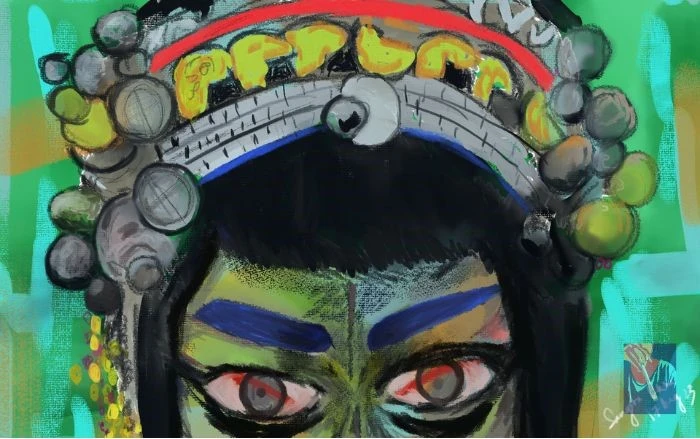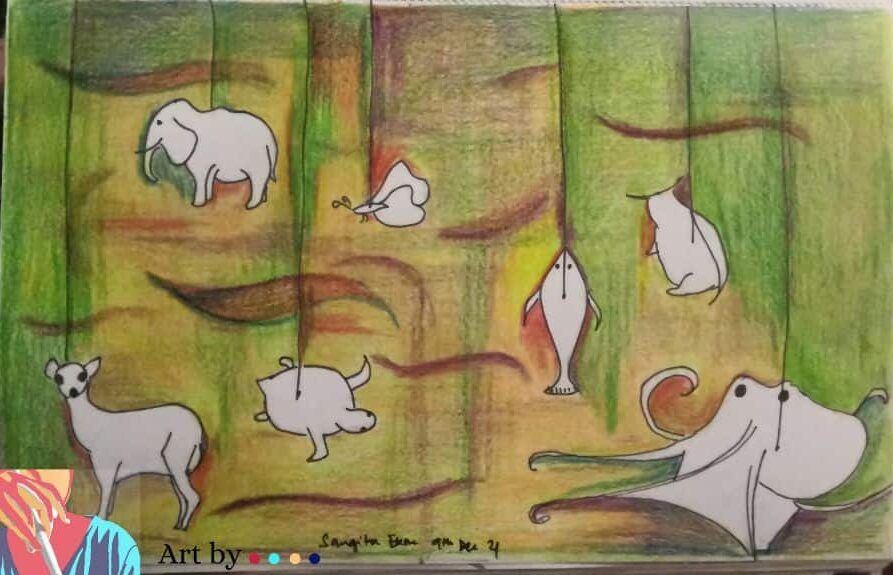Love, Death, and Robots kicked off its third season with nine episodes, each with a different animation style, saving the best for the last.
Just over 15 minutes long with no dialogues, Jibaro leaves the viewers to do the guesswork purely on its stunning visual.
It is well understood that the story portrays a toxic relationship between the deaf knight and a golden siren. In this article, I want to peel further on why the relationship developed in the first place.
AD
But First – Jibaro Meaning
The term – Jibaro means a Puerto Rican farmer or rural worker. PopSugar pointed out that the Jibaro episode is possibly misnamed and hence doesn’t hold any significance.
In an interview with Deadline, Alberto Mielgo mentions that Jibaro is a catchy word. The popularity of this story shows that that term worked well. It is short and easy to remember.
Metal-Themed Animation
Metal, particularly gold, is central to Jibaro’s art style.
Jibaro begins with the sound of clanking metal as the troop of knights passes through the jungle. Their horses are draped in royal blue color with various golden jewelry. There is a golden shimmer on the trees, leaves, and bark.
The video has dominant dark-bluish tones across its length, perfectly complementing the golden tones. The knights are covered in battle armor and carry metal swords.
Jibaro is set in olden times and merges themes of fantasy and magic. Metal overdose suits this theme well.
Metal-Themed Romance
The Jibaro story in Love, Death, and Robots is anything but love.
The golden Siren likes to collect men. She lures them into her lake with her shrieks. This probably warms her heart too.
As the knights are drawn into the lake, driven mad by her voice, they cut each other out, leaving a splash of warm blood in the middle of Siren’s heart-shaped blue lake.
She probably perceives them as her kind because she sees the knights draped in metal.
When she fails to lure the deaf knight, who is also clad in metal, she doubts her voice and frantically touches her neck before plunging back into her lake.
She is also intrigued.
A pure metal attraction engulfs her, and she acts it out by sleeping behind the deaf knight, keeping her face on his, and licking his scabbard bottom up.
On the other hand, the deaf knight has a thing for gold. When the troop halts, he finds a flat gold trinket near the Siren’s lake. He is immune to Siren’s voice but doesn’t reject her advances when he glances at the golden woman up close.
He discovers that she isn’t wearing a golden suit but has golden scales on her body. He’s hurt when she kisses him with her rubied tongue.
There was zero possibility of anything physical happening between them.
Jibaro Ending Explained
Since the deaf knight was only interested in her gold, he skins her like a fish taking every bit of her body he could and throwing her bloodied body back into the lake.
At a later point, when he drinks from the same lake, he gains his hearing ability. No logic can explain this but magic.
When the Siren realizes this, she shrieks again from a place of agony and heartbreak. She takes her revenge by artfully drowning him as he dances his way into the depths of her lake.
Final Thoughts
Love, Death, and Robots’ Jibaro embellished a simple story with some of the finest visual works created to date. The character design of the Siren is otherworldly, and the combination of dance choreographed by Sara Silkin adds more realism to the animation.
Jibaro is a short film that continues to intrigue and inspire creativity. People have adopted this visual poetry and recreated it in paintings, cosplays, and other forms of expression. For a small film without dialogues, Jibaro is a testament to visual beauty’s power.
AD


